
121+ Interesting Dental Research Topics for Undergraduates
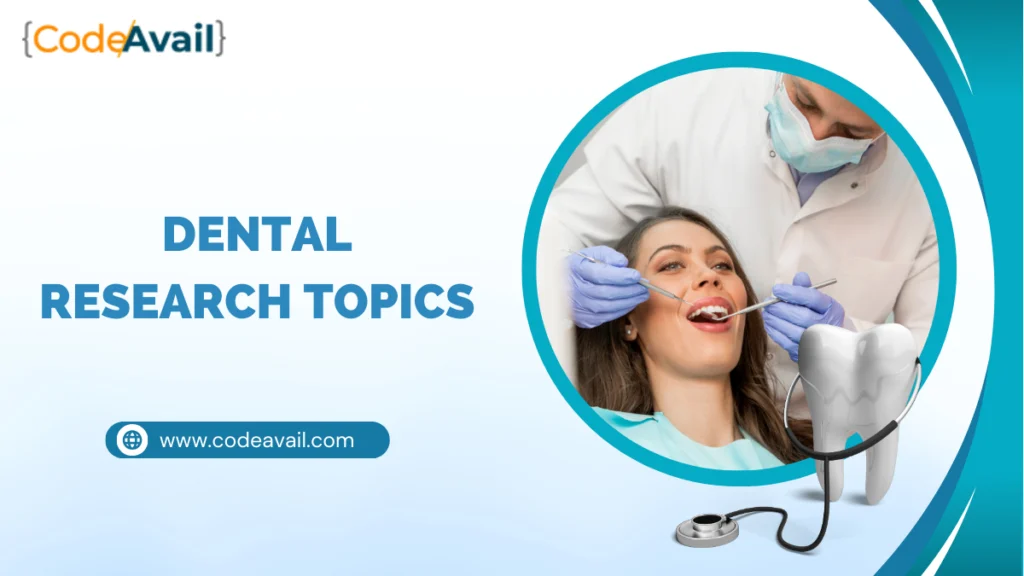
Did you know poor oral health can be linked to heart disease? It’s true! This surprising fact underscores the importance of dental research in maintaining overall health and well-being.
Understanding the intricate connections between oral health and systemic conditions like heart disease highlights the critical role of research in advancing our knowledge and improving patient outcomes.
In this blog, we will delve into various dental research topics tailored specifically for undergraduates, providing insights, resources, and inspiration to explore this fascinating field further.
Whether you’re passionate about dentistry or simply curious about the intersection of oral health and overall wellness, join us as we uncover the exciting possibilities in dental research for undergraduates.
What is Dental Research Topic?
Table of Contents
A dental research topic is a subject of study within the field of dentistry that aims to explore, investigate, and analyze various aspects related to oral health, dental care, and dental treatments.
These topics cover a wide range of areas, including but not limited to dental diseases, preventive measures, treatment methods, oral hygiene practices, dental technology advancements, and the impact of oral health on overall well-being.
Dental research topics provide opportunities for scholars, researchers, and students to contribute to the advancement of dental science, improve patient care, and address current challenges in oral health care.
Importance of Dental Research Topics for Undergraduates
Dental research topics are essential for undergraduates for several reasons:
Skill Development
Engaging in dental research topics helps undergraduates develop critical thinking, problem-solving, and analytical skills essential for their academic and professional growth.
Contribution to Knowledge
Undertaking research allows undergraduates to contribute to the existing body of knowledge in dentistry, advancing the field and addressing emerging challenges.
Career Preparation
Research experience enhances students’ competitiveness for dental school admissions, graduate programs, and future careers in academia, clinical practice, or research institutions.
Practical Application
Research topics offer undergraduates the opportunity to apply theoretical knowledge gained in the classroom to real-world scenarios, fostering a deeper understanding of dental concepts and techniques.
Professional Networking
Engaging in research exposes undergraduates to collaboration with peers, faculty, and professionals, facilitating valuable networking opportunities within the dental community.
Popular Dental Research Topics for Undergraduates
Dental research topics for undergraduates encompass a wide range of areas within dentistry. Here are some examples across different subfields:
Dental Diseases
- The role of genetics in the development of periodontal disease.
- Strategies for early detection and prevention of dental caries.
- Investigating the link between diabetes and periodontal disease.
- Factors influencing the prevalence of oral cancer among different demographics.
- Impact of dietary habits on the occurrence of enamel erosion.
- Effectiveness of fluoride in preventing dental decay.
- The role of saliva in maintaining oral health and preventing diseases.
- Trends in the prevalence of temporomandibular joint disorders.
- Oral manifestations of systemic diseases: A comprehensive review.
- Investigating the relationship between oral health and overall systemic health.
- The effectiveness of probiotics in preventing oral infections.
- Psychological factors influencing dental anxiety and its management.
Dental Treatments
- Comparison of different types of dental implants: Materials, techniques, and success rates.
- Advancements in minimally invasive techniques for dental restoration.
- Comparative analysis of traditional braces versus clear aligners in orthodontic treatment.
- The role of lasers in various dental procedures: Benefits and limitations.
- Innovations in endodontic treatment: From rotary instruments to regenerative techniques.
- Efficacy of different whitening agents in professional and over-the-counter dental bleaching.
- The impact of COVID-19 on dental practice: Adaptations, challenges, and future implications.
- Investigating the use of stem cells in dental tissue regeneration.
- Comparative study of different materials used in dental restorations: Strength, durability, and aesthetics.
- Exploring the potential of 3D printing technology in prosthodontics and oral surgery.
- Patient satisfaction and outcomes following different types of orthognathic surgeries.
- Long-term success rates of various techniques in root canal therapy.
Oral Health Promotion and Education
- Effectiveness of school-based oral health education programs in improving children’s oral hygiene.
- Strategies for promoting oral health in underserved communities: Challenges and solutions.
- Role of social media and technology in disseminating oral health information.
- Impact of community water fluoridation on dental caries prevention.
- The role of parents and caregivers in establishing children’s oral hygiene habits.
- Cultural influences on oral health beliefs and practices: Implications for public health campaigns.
- Effectiveness of motivational interviewing in promoting behavior change for better oral health.
- Investigating the efficacy of school-based dental sealant programs.
- Oral health literacy among different populations: Assessments and interventions.
- The role of dentists in advocating for policies promoting oral health equity.
- Strategies for improving oral health outcomes among elderly populations.
- Integrating oral health education into primary care settings: Opportunities and challenges.
Dental Materials and Biomaterials
- Biocompatibility of dental materials: Assessing safety and long-term effects.
- Development of antimicrobial dental materials to prevent biofilm formation.
- Investigating the mechanical properties of novel dental composites.
- Bioactive materials in dentistry: Applications and clinical implications.
- Biodegradable materials for temporary dental restorations.
- Nanotechnology in dentistry: Potential applications and future directions.
- Development of remineralizing agents for the management of dental caries.
- Investigating the properties and applications of dental ceramics.
- Biomimetic materials in dentistry: Mimicking natural tooth structure for improved outcomes.
- Sustainable practices in dental material manufacturing and disposal.
- Advances in adhesive systems for bonding dental restorations.
- Biomechanical properties of dental implant materials: Enhancing stability and osseointegration.
Oral Microbiology and Immunology
- Microbiome of the oral cavity: Composition, dynamics, and role in health and disease.
- Host-pathogen interactions in periodontal diseases: Insights into disease progression.
- Immunological responses to dental biofilms and their implications for treatment.
- Role of probiotics in modulating oral microbiota and preventing dental diseases.
- Viral infections in dentistry: From herpesviruses to SARS-CoV-2.
- Impact of antimicrobial resistance on dental infections and treatment outcomes.
- Microbial ecology of dental plaques in different oral environments.
- Oral manifestations of HIV/AIDS: Diagnosis, management, and implications.
- Biofilm formation on dental implant surfaces: Prevention and management strategies.
- Innate and adaptive immune responses in oral mucosal diseases.
- Virulence factors of oral pathogens and their role in disease progression.
- Immunomodulatory properties of dental materials and their impact on tissue response.
Dental Public Health
- Epidemiology of dental diseases: Trends, disparities, and risk factors.
- Health promotion strategies for improving access to dental care in rural areas.
- Oral health inequalities among different socioeconomic groups: Causes and solutions.
- Cost-effectiveness of preventive dental interventions: A systematic review.
- Integrating oral health into primary care: Models of collaborative practice.
- Tele-dentistry: Opportunities and challenges for improving access to dental care.
- Oral health surveillance systems: Monitoring trends and assessing needs.
- Assessing the effectiveness of community water fluoridation programs.
- Role of dental professionals in addressing oral health disparities.
- Impact of environmental factors on oral health outcomes: Pollution, climate change, and urbanization.
- Dental workforce issues: Distribution, shortages, and workforce diversity.
- Oral health policies and advocacy: Strategies for promoting legislative change.
Pediatric Dentistry
- Early childhood caries: Risk factors, prevention, and management strategies.
- Behavior management techniques in pediatric dentistry: Evidence-based approaches.
- Oral health outcomes of children with special healthcare needs: Challenges and interventions.
- Dental trauma in children: Prevention, diagnosis, and treatment.
- Assessment of dental fear and anxiety in pediatric patients: Tools and interventions.
- Maternal and child oral health: Prenatal factors influencing dental health outcomes.
- Dental developmental anomalies: Diagnosis, management, and long-term implications.
- Effectiveness of fluoride varnish application in preventing dental caries in children.
- Impact of nutrition and dietary habits on pediatric oral health.
- Pediatric sedation techniques in dentistry: Safety, efficacy, and guidelines.
- Orthodontic considerations in pediatric dentistry: Early intervention and treatment planning.
- Pediatric dental emergencies: Management and prevention strategies.
Oral and Maxillofacial Surgery
- Outcomes of orthognathic surgery in patients with skeletal discrepancies.
- Management of impacted third molars: Indications, techniques, and complications.
- Reconstruction of maxillofacial defects following trauma or tumor resection: Surgical options and outcomes.
- Temporomandibular joint disorders: Diagnosis, management, and surgical interventions.
- Bone grafting techniques in implant dentistry: Approaches and success rates.
- Surgical management of obstructive sleep apnea: Role of maxillomandibular advancement.
- Surgical treatment options for cleft lip and palate: Multidisciplinary approaches and long-term outcomes.
- Surgical management of oral and maxillofacial infections: Antibiotic therapy, drainage, and debridement.
- Soft tissue augmentation techniques in aesthetic and functional maxillofacial surgery.
- Advancements in minimally invasive techniques for orthognathic surgery.
- Surgical management of facial trauma: Emergency interventions and long-term rehabilitation.
- Digital planning and navigation in oral and maxillofacial surgery: Enhancing precision and outcomes.
Dental Education and Training
- Effectiveness of simulation-based training in dental education: Skill acquisition and retention.
- Integration of digital technology into dental curricula: Challenges and opportunities.
- Peer-assisted learning in dental education: Impact on student performance and satisfaction.
- Interprofessional education in dentistry: Collaborative approaches to patient care.
- Continuing education requirements for dental professionals: Trends and implications.
- Assessment methods in dental education: Moving beyond traditional exams.
- The role of mentorship in shaping the career trajectories of dental students.
- Global perspectives in dental education: Cross-cultural experiences and challenges.
- Incorporating evidence-based practice into dental curricula: Strategies and outcomes.
- Tele-education in dentistry: Remote learning platforms and their effectiveness.
- Student perceptions of clinical experiences in dental education: Barriers and facilitators.
- Innovations in competency-based dental education: Assessing clinical proficiency and readiness for practice.
Dental Technology and Innovation
- Artificial intelligence in dentistry: Applications in diagnosis, treatment planning, and outcomes prediction.
- Virtual reality and augmented reality in dental education and patient care.
- Robotics in dentistry: Automation of procedures and precision in surgical interventions.
- Wearable technology for monitoring oral health behaviors and conditions.
- 3D printing in dentistry: Customization of dental implants, prostheses, and surgical guides.
- Digital smile design: Utilizing technology for aesthetic treatment planning and communication.
- Smart materials in dentistry: Self-healing, self-cleaning, and bioactive properties.
- Teledentistry platforms for remote consultations, monitoring, and patient education.
- Biomimetic approaches in dental materials design: Mimicking natural tooth structure and function.
- Nanomaterials in oral healthcare products: Enhanced delivery systems and therapeutic applications.
- Bioprinting of dental tissues and organs: Advancements in regenerative dentistry.
- Energy-based devices in dentistry: Laser therapy, photobiomodulation, and electrosurgery applications.
- Development of a Smart Toothbrush with Artificial Intelligence Integration.
These topics offer a comprehensive overview of the diverse areas within the field of dental research and provide undergraduates with a plethora of options for exploring their interests and making meaningful contributions to the discipline.
Current Trends in Dental Research
Several trends were prevalent in dental research. While there may have been further developments since then, here are some prominent trends at that time:
Biomimetic Dentistry
Mimicking natural tooth structure and function using advanced materials and techniques.
Tele-dentistry
Utilizing technology for remote consultations, monitoring, and patient education, especially amidst the COVID-19 pandemic.
Regenerative Dentistry
Developing therapies to regenerate dental tissues and promote natural healing processes.
Personalized Dentistry
Tailoring treatment plans based on individual patient characteristics, genetics, and preferences.
Minimally Invasive Dentistry
Emphasizing conservative approaches to preserve tooth structure and improve patient comfort.
Digital Dentistry
Integration of digital technology for diagnostics, treatment planning, and fabrication of dental restorations.
Nanotechnology
Utilizing nanomaterials for improved dental materials, drug delivery systems, and diagnostic tools.
Challenges in Dental Research Topics
Dental research, like any scientific field, faces its share of challenges. These challenges can span various aspects of the research process, from funding and resources to methodological complexities and ethical considerations. Here are some common challenges in dental research:
Funding Constraints
Limited financial resources hinder the initiation and continuation of dental research projects.
Access to Resources
Inadequate access to specialized equipment, materials, and facilities poses a barrier to conducting comprehensive research.
Recruitment of Participants
Difficulty in recruiting diverse and representative study populations affects the generalizability of research findings.
Ethical Considerations
Navigating ethical complexities, such as informed consent and privacy concerns, adds challenges to dental research.
Interdisciplinary Collaboration
Facilitating collaboration between dental professionals, researchers, and other disciplines is essential but often challenging.
Translation of Research into Practice
Bridging the gap between research findings and clinical implementation remains a significant challenge in dental research.
The exploration of dental research topics holds immense promise for advancing oral health care and addressing multifaceted challenges within the field.
From unraveling the mysteries of oral diseases to pioneering innovative treatments and technologies, dental research serves as the cornerstone of progress and improvement in patient outcomes.
Despite facing various challenges such as funding constraints and ethical considerations, the pursuit of dental research remains crucial for enhancing preventive measures, refining treatment modalities, and promoting overall well-being.
By fostering interdisciplinary collaboration, embracing emerging trends, and prioritizing the translation of research findings into practice, the dental community can continue to drive impactful discoveries and advancements for the benefit of individuals worldwide.
1. How can I stay updated on the latest dental research?
Staying updated on the latest dental research can be as simple as subscribing to reputable dental journals, attending conferences, and following dental research institutions and experts on social media platforms.
2. What are some examples of emerging dental research topics?
Emerging dental research topics include genetics and oral health, biomaterials and tissue engineering, and microbiome studies, among others.
3. Why is dental research important for patients?
Dental research drives innovation in oral healthcare, leading to improved treatment outcomes, personalized care, and enhanced preventive strategies for patients.
Related Posts

Science Fair Project Ideas For 6th Graders
When it comes to Science Fair Project Ideas For 6th Graders, the possibilities are endless! These projects not only help students develop essential skills, such…

Java Project Ideas for Beginners
Java is one of the most popular programming languages. It is used for many applications, from laptops to data centers, gaming consoles, scientific supercomputers, and…
An official website of the United States government
The .gov means it’s official. Federal government websites often end in .gov or .mil. Before sharing sensitive information, make sure you’re on a federal government site.
The site is secure. The https:// ensures that you are connecting to the official website and that any information you provide is encrypted and transmitted securely.
- Publications
- Account settings
Preview improvements coming to the PMC website in October 2024. Learn More or Try it out now .
- Advanced Search
- Journal List
- Dent J (Basel)

Hot Topics in Clinical Oral Implants Research: Recent Trends in Literature Coverage
Vesela valkova.
1 Medical University of Vienna, Bernhard Gottlieb School of Dentistry, Sensengasse 2a, A-1090 Vienna, Austria; [email protected] (V.V.); moc.oohay@aneeneec (C.U.M.)
Ceeneena Ubaidha Maheen
Bernhard pommer.
2 Academy for Oral Implantology, Lazarettgasse 19/DG, A-1090 Vienna, Austria
Xiaohui Rausch-Fan
3 Medical University of Vienna, Rausch-Fan Laboratory, Sensengasse 2a, A-1090 Vienna, Austria; [email protected]
Rudolf Seemann
4 Medical University of Vienna, Department of Oral and Maxillofacial Surgery, Währinger Gürtel 18-20, A-1090 Vienna, Austria; [email protected]
This systematic review looks at thematic trends in clinical research publications on dental implants. For this purpose, MEDLINE electronic searches as well as additional hand searches of six main journals in the field were conducted. A total of 2875 clinical studies published between 2001 and 2012 met the inclusion criteria and were subjected to statistical analysis. Hot topics in dental implant literature included immediate loading (14.3%), bone substitutes (11.6%), cross-arch full bridges (8.0%), and immediate implant placement (7.5%). A significant increase in scientific interest for immediate loading (+6.3%, p = 0.001), platform switching (+2.9%, p = 0.001), guided implant surgery (+1.9%, p = 0.011), growth factors ( p = 0.014, +1.4%), piezoelectric surgery (+1.3%, p = 0.015), and restorative materials (+0.7%, p = 0.011) was found. A declining scientific interest in onlay grafting (−0.3%, p = 0.042) was recorded. The findings regarding current clinical oral implants research tie in with better-informed consumers and increased patient demands. Our results demonstrate an increasing interest in techniques that avoid complicated procedures such as bone grafting and that reduce treatment duration.
1. Introduction
The present special issue of Dentistry Journal deals with “Advances in Implant Dentistry,” and the following keywords denote hot topics in this field: template-guided implant placement, minimally invasive techniques, short lengths and reduced implant diameters, novel bone grafting techniques, medically compromised patients, peri-implantitis treatment, immediate placement and restoration, transition from a failing dentition, CAD/CAM prosthetics, and optical intraoral impressions. As the first paper in this special issue, the following review aims to provide the background to recent trends and “hot topics” in advanced and minimally invasive oral implant treatment [ 1 ].
The concept of osseointegration of oral implants was introduced by Branemark 40 years ago and set the precedent for new knowledge in oral medicine. Since then, oral implantology has become one of the most investigated topics in dental medicine, with exponential growth in the use of implant products [ 2 ]. Data shows that the number of implants used for oral rehabilitation in the USA increased ten-fold between 1983 and 2002 and also ten-fold from 2000 to 2010 [ 3 ]. While previously the primary aim of research on oral implantology was to find ways to rehabilitate function [ 4 ], many efforts nowadays are focused on the shortening of treatment procedures, simplifying surgical techniques, and esthetic improvement [ 5 ]. It is well known that oral implantology is a prosthetically driven field with a major surgical component [ 6 ]. Therefore, the current state of the art in implant dentistry represents advances in both surgical and prosthodontic techniques [ 5 ].
Keeping pace with research development, the aim of this systematic review was to investigate contemporary issues in oral implantology research and to perform a topical trend analysis of clinical studies published in the time period from 2001 to 2012.
2. Material and Methods
2.1. search strategy.
A MEDLINE electronic literature search was conducted, limited to clinical studies on dental implants published between 2001 and 2012. The search term “dental implant,” sorted by “year of publication” was used in order to capture all relevant articles [ 7 ]. Additional hand searching was performed to examine six main journals in the field: The International Journal of Maxillofacial Implants , Journal of Oral Implantology , Clinical Oral Implant Related Research , Implant Dentistry , European Journal of Oral Implantology , and Clinical Oral Implant Research . Two reviewers independently identified all trials [ 8 ]. The PubMed search initially identified 15,695 publications, and 5048 additional results were identified by hand search. These studies were screened for their relevance based upon a threshold set [ 9 ]:
- inclusion criteria: prospective and retrospective studies, cross-sectional studies, case-control studies, case reports with at least 10 patients
- exclusion criteria: non-English publications, statistical studies, animal studies, finite element analyses, in vitro studies, review articles, and case series with fewer than 10 patients.
A total number of 3695 articles were subjected to abstract review. Where the abstract provided little information, a full text analysis was performed. Authors of potentially relevant publications, which were not available or lacked data, were contacted and asked for cooperation. Ultimately, 2875 clinical studies were identified as meeting the inclusion criteria. Our goal was to investigate how trends change over time as regards the topics examined in modern implant dentistry research. In this respect, we have determined that 31 topics were appropriate: 23 of them concerned surgical issues and 8 dealt with prosthodontic issues ( Table 1 ). First, all relevant publications were screened for the topics listed in Table 1 independently by two reviewers. Thereafter, the results were verified, and all doubtful publications were discussed before the final decision was taken.
Topics sorted by literature coverage. Absolute numbers of publications per year as well as the total percentage of all clinical papers 2001–2012 (* indicates prosthodontic topics).
2.2. Statistical Analysis
As mentioned above, 2875 publications were analyzed. In order to find statistical trends in respect to the relevant topics between 2001 and 2012, Poisson regression analysis was performed, taking the level of significance as p ≤ 0.05, using R-project statistical software version 3.1.0. This statistical test was used to model count data, which in this case was the number of publications. p -values were calculated for every topic, taking into account the relative number publications per topic from the total number of publications.
The surgical and prosthodontic topics of interest were computed as percentages of the total number of publications ( Table 1 ). Among the most covered surgical topics in the literature were immediate loading (14.3%), bone substitutes (11.6%), immediate implant placement (7.5%), simultaneous implant placement with bone augmentation (6.4%), onlay grafting (4.3%), medically compromised patients (4.0%), healing modality (3.7%), transcrestal sinus floor elevation (3.0%), flapless surgery (2.7%), socket grafting (2.6%), and guided surgery (2.4%). Immediate loading (14.3%), cross-arch implant bridges (8.0%), early loading (4.5%), and platform switching (1.7%) were ranked as the most prevalent prosthodontic issues in current oral implant research.
The surgical issues were the more prevalent topics, demonstrating an increasing rate of publications over the time in terms of mean coverage (0.53 ± 0.01) per publication ( Figure 1 ), as compared to prosthodontic issues (0.33 ± 0.05 hits). The mean coverage values were estimated based on yearly ratios: the number of prosthodontic/surgical publications per year in relation to the total number of publications per year. The significant increase in publications on surgical issues over the years was demonstrated by Poisson regression analysis ( p = 0.002).

Literature coverage of surgical (s) versus prosthodontic (p) issues: x-axis indicates year of publication, y-axis indicates the ratio of numbers of publications (surgical/prosthodontic) to the total number of publications per year.
A total of eight topics showed significant trends ( p < 0.05) over the years 2001 to 2012 ( Table 2 ). Immediate loading demonstrated the highest increase with a positive change of +6.3% and p = 0.001 ( Figure 2 a). Platform switching (+2.9%, p = 0.001) was the second topic showing a significant increase; however, only one relevant article was detected between 2001 and 2006 ( Figure 2 b). These topics were followed by guided implant surgery (+1.9%, p = 0.011), growth factors (+1.4%, p = 0.014), piezoelectric surgery (+1.3%, p = 0.015), and restorative materials (+0.7%, p = 0.011). The green line represents the percentage of the total number of publications for every year. The black trend line reveals the relationship between the year of publication (x-variable) and the percentage of the total number of publications (y-variable). Since there were no publications on platform switching between 2002 and 2005, there is a negative trend line intercept starting from 2001 ( Figure 2 b). Decreasing scientific interest and a corresponding downward trend were recorded for the topic onlay grafting (−0.3%, p = 0.042).

Trend curves (percentage out of the total number of publications per year) for ( a ) immediate loading; ( b ) platform switching; ( c ) flapless implant surgery; ( d ) guided implant surgery; ( e ) growth factors; ( f ) piezoelectric surgery; ( g )restorative materials; and ( h ) onlay grafting.
Topics demonstrating a significant increase (positive) or decrease (negative change) of scientific interest in the years 2001–2012.
4. Discussion
Comparisons of published clinical trials per year revealed a trend of increasing interest in conducting clinical trials, starting with 137 relevant articles in the year 2001 and reaching the number of 446 publications in the year 2012. However, even the total number of 3695 articles is smaller than the total number of 4655 clinical studies published between 1989 and 1999 reported by Russo et al. [ 10 ]. Given that the number of publications increased with every year, it was considered more appropriate to perform Poisson regression analysis related to percentage-based values rather than related to absolute values for all topics.
Immediate loading proved to be the most studied topic in the last decade ( Figure 2 a). This avid scientific interest can be explained by several advantages it offers, such as shortened treatment protocols, immediate rehabilitation of the function, and high patient satisfaction. Meta-analyses on single-tooth implant placement have shown encouraging results for the immediate loading protocol as a promising alternative to conventional loading, as it may be equally successful and may not significantly affect marginal bone resorption and implant success rates [ 11 , 12 , 13 ]. Another meta-analysis by Papaspyridakos et al. [ 14 ] reported that there was no significant difference between immediate, early, and conventional loading in edentulous patients with fixed prostheses, and all three protocols showed a high level of success. However, other reviewers disagree with this assessment of the unimpaired success of the immediate loading protocol. A meta-analysis of clinical studies comparing the immediate and conventional loading of single tooth implants discovered that immediate loading has a significantly higher risk of implant failure [ 15 ]. Schimmel and coworkers [ 16 ] concluded that, despite the high implant survival rates, the conventional and early loading protocols are superior to immediate loading as better documented protocols, providing better results in the first year of loading. A survey among implantologists from 16 countries all over the world stated that immediate loading was the treatment protocol most accepted by dentists in Australia and Europe [ 17 ]. Based on these controversial statements in the literature, it can be concluded that there is still a lack of well-designed RCTs concerning loading protocol [ 18 ] and immediate loading may well retain its place as a hot topic of discussion over the coming years.
The platform-switching concept arose in 1980 with the introduction of the wide diameter implants. Due to the lack of commercially available matching components for wide diameter implants, the standard-diameter abutments were used. Later, it was found that “platform-switched” implants demonstrated osseointegration with less initial crestal bone loss and were thus superior to the “platform-matched implants” [ 19 ]. However, the first introduction of this concept appeared in 2005 [ 20 ]. Radiographic observation over a period of 13 years demonstrated that platform switching resulted in little or no crestal bone loss as compared to the conventional implants, whereas marginal bone resorption of 1.5 mm on average was accepted as one of the criteria for success of the dental implant [ 21 ]. Our study shows that the increasing publication rate of clinical studies happened to coincide with the first official introduction of this concept, with a positive linear trend for this topic starting in 2005 ( Figure 2 b). Since guided surgery is performed in combination with the flapless procedure in most cases, [ 22 ] the similarity in literature coverage, illustrated in both scatter plots, does not come as a surprise ( Figure 2 c,d).
In contrast to the last decade of the 20th century, when the main progress in the field of oral implant research was made in alveolar bone resorption management to refine the different graft techniques [ 23 ], our findings show that in the 21st century there has been increasing interest in methods developed to overcome the grafting procedures and even a loss of interest in one of the most used augmentation techniques, i.e. , onlay bone grafting. It seems that dental implant scientific work is inspired more by the patient’s appraisals [ 24 ], seeking to improve minimally invasive surgical techniques [ 25 ], diminish patient morbidity, and shorten the treatment time. However, the role of industrial funding for conducting clinical studies should be taken into consideration. 32.4% of the clinical trials are supported by industry as a source of funding, which is a suitable way for companies not only to comply with safety and efficacy standards, but also to introduce their new products to the market [ 26 ]. This industry sponsorship may lead to biased reporting and pro-industry conclusions [ 27 ]. This does have the potential to reflect on ongoing trends in clinical research. In this connection for instance, the relatively innovative technique of guided implant surgery provides less painful and invasive treatment but at the same time is a more difficult and expensive procedure than conventional implant placement, demonstrating the same survival rate. However, a survey by Hof and coworkers [ 28 ] showed that the main priority for the patients when it comes to implant therapy remains the predictability of treatment success. The achievements brought about by ongoing clinical research, such as improved quality, ease of use of implant systems, as well as shorter treatment duration [ 29 ] may provide grounds for future researchers to face the challenge of preserving the perspectives of clinical implant research, and specifically, to enhance the relationship between private practice and science without involving marketing.
In order to adhere to ethical rules on explicit reporting, including also the disadvantages of any study, the researchers are obligated to report their study’s limitations. Undoubtedly, meta-analysis is the “gold standard” for performing any systematic review aiming at assessing treatment effects. Given that the variable investigated in the present study was the number of publications, the Poisson regression was selected as a statistical tool. The Poisson regression is used to model count data (in the present case this is the number of publications) and is an appropriate statistical method for predicting trends. Therefore, no methods estimating risk of bias, quality design, or heterogeneity of the studies provided by the meta-analysis were applied in this study.
A further limitation is presented by the use of only one database source. The findings in the present work are based on analysis, including studies from MEDLINE, and an additional hand search of six journals. However, the search strategy did not consider other databases such as EMBASE and the Cochrane Central Register of Controlled Trials.
In conclusion, the analysis of scientific literature on dental implants revealed several hot topics in the time period between 2001 and 2012. The most frequently covered surgical issues were bone substitutes (11.6%) and immediate implant placement, (7.5%), while the most prevalent prosthodontic topics involved immediate loading (14.3%) and cross-arch full bridges (8.0%). Given that the topics demonstrating the highest increase in interest were prosthodontic topics, i.e. , immediate loading (+6.3%) and platform switching (+2.9%), the interest in researching prosthodontic topics will most likely continue to increase.
Acknowledgments
No funding was received to support the study.
Author Contributions
Bernhard Pommer conceived and designed the experiments; Vesela Valkova and Ceeneena Ubaidha Maheen performed the experiments; Rudolf Seemann analyzed the data; Xiaohui Rausch-Fan contributed analysis tools; Vesela Valkova wrote the paper.
Conflicts of Interest
The authors declare no conflict of interest.
- Member Login
Oral Health Topics
The Oral Health Topics section on ADA.org is intended to provide dentists with clinically relevant, evidence-based science behind the issues that may affect their patients and their practice. Refer to the Oral Health Topics for current scientific reviews of subjects that relate to oral health, from amalgam separators and antibiotic prophylaxis to xerostomia and X-rays.
Featured oral health topics
Learn which oral analgesics are used for the management of acute dental pain.
Understand Occupational Safety and Health Administration (OSHA) safety standards.
Learn about special considerations for pregnant patients and pregnant dental personnel .
Efficacy information about whitening treatments for extrinsic and intrinsic staining.
- Search Menu
- Author Guidelines
- Submission Site
- Open Access
- Why Publish with EJO
- Advertising and Corporate Services
- Advertising
- Reprints and ePrints
- Sponsored Supplements
- Branded Books
- Journals Career Network
- About The European Journal of Orthodontics
- About the European Orthodontic Society
- Editorial Board
- Self-Archiving Policy
- Dispatch Dates
- Journals on Oxford Academic
- Books on Oxford Academic

Article Contents
- < Previous
Short oral and scientific poster presentations accepted for the 96th Congress of the European Orthodontic Society, Hamburg 10–14 June 2020
- Article contents
- Figures & tables
- Supplementary Data
Short oral and scientific poster presentations accepted for the 96th Congress of the European Orthodontic Society, Hamburg 10–14 June 2020, European Journal of Orthodontics , Volume 42, Issue 5, October 2020, Pages e1–e44, https://doi.org/10.1093/ejo/cjaa059
- Permissions Icon Permissions
Article PDF first page preview
Email alerts, citing articles via, looking for your next opportunity.
- Recommend to your Library
Affiliations
- Online ISSN 1460-2210
- Copyright © 2024 European Orthodontic Society
- About Oxford Academic
- Publish journals with us
- University press partners
- What we publish
- New features
- Open access
- Institutional account management
- Rights and permissions
- Get help with access
- Accessibility
- Media enquiries
- Oxford University Press
- Oxford Languages
- University of Oxford
Oxford University Press is a department of the University of Oxford. It furthers the University's objective of excellence in research, scholarship, and education by publishing worldwide
- Copyright © 2024 Oxford University Press
- Cookie settings
- Cookie policy
- Privacy policy
- Legal notice
This Feature Is Available To Subscribers Only
Sign In or Create an Account
This PDF is available to Subscribers Only
For full access to this pdf, sign in to an existing account, or purchase an annual subscription.

Innovative Education and Scientific Research Foundation
Registered Under Government of India NGO
Indian Trust Act 1882

Seema Dental College & Hospital
Dental school in Uttarakhand
Rishikesh, Uttarakhand
"Dentocon 2020"
"exploring the unique facets of dentistry like never before", guidelines for e - paper presentations.
Last date for receipt of abstracts is Thursday 15 December 2020 The presenting author and co-author must have registered for the Conference
1) It is mandatory for the presenters to get registered for the conference. A Registered Delegate only can apply under one of the following categories:
Group: 1 - Undergraduate Dental Students & Interns
Group: 2 - Post Graduate Dental Students
Group: 3 - Professionals (BDS, MDS/ Researchers)
2) Only two Co-Authors are allowed
3) Type of e-Paper Presentations: Original Research/ Systematic Analysis / Case Series / Case Reports, Reviews.
4) Number of People Allowed for Paper Presentations: One or Maximum Two . (If two people are presenting then both delegates need to register for conference.)
5) Once we receive the abstract, the notification will be sent to the author. All communications should be done by the presenting authors only.
The structured abstract should not exceed 200 words excluding the Title and References. The abstract headings should be as follows:
6) For original and secondary research Background, methods, Results, Conclusions .
7) Case reports: Background, Case report, Conclusion .
8) Reviews: Background, Summary, Conclusion .
9) No names of the author or co-authors and guiding staff or HOD or college name should be mentioned on the poster. Mention of any such names would amount to disqualification of the poster
10) After the acceptance of the poster, the poster would be allotted a reference number which will be informed to the authors. The presenting author is supposed to add the reference number to his paper presentation and send a recorded video of the paper presentation. The length of the video should not be more than 10 minutes. The same pre-recorded video will be played in the conference.
11) All the authors and the co-authors are supposed to be present on the day of the conference as there would be question and answer by the judges on your study.
12) All the paper presentations should be in MS office PowerPoint.
13) It is mandatory to submit the abstracts online at dentocon.iesrf.org/submission
14) Power point preparation guidelines for paper presentation
ppt design for participants presenting paper.
It should be as follows
Font Style Should be Readable – Recommended fonts for ppt: Arial, Tahoma,
Veranda Standardize the Font Throughout.
- Title: 40 point
- Subtitle: 32 point
- Content text: 24-28 point
- Footnote: 12-16 points
The first slide should contain title and registration number without any identity of name and affiliations

Trending topics in orthodontics research during the last three decades: A longitudinal bibliometric study on the top-cited articles
Affiliations.
- 1 Department of Dentistry, Universidad Europea de Valencia, Valencia, Spain.
- 2 Department of Dentistry, University of Valencia, Valencia, Spain.
- 3 Department of Dentistry, Universidad de Salamanca, Salamanca, Spain.
- 4 Department of Oral Rehabilitation, Istituto Stomatologico Italiano, Milan, Italy.
- PMID: 32449978
- DOI: 10.1111/ocr.12396
Objective: To perform a bibliometric analysis on the top-cited articles over the last three decades from 1989 to 2018, using a longitudinal set-up, in order to analyse how articles' features have evolved over time.
Setting and sample population: A sample of 312 articles divided into three subgroups of 104 top-cited articles for each decade were included. The h-index value was used to determine the sample size.
Materials and methods: The articles were identified through a search in the category "dentistry oral surgery and medicine" of the Web of Science database. The information relative to the articles was collected. Descriptive statistics was used to describe the articles and the journals; selected parameters were analysed with the Kruskal-Wallis and the Mann-Whitney U test at the 0.05 level of significance.
Results: The top-cited articles were published mainly by orthodontic journals. Along the last two decades, the scientific contribution of Asian and South American countries rose significantly. The trending topics varied in each decade. Skeletal anchorage-related articles dominated the production of the decade 1999-2008 while new technologies as CBCT displayed a higher prevalence in the last decade, where new topics such as corticotomy-assisted orthodontics started to appear. The number of multi-authored articles increased while the articles from no university institutions decreased.
Conclusion: The publications in the three studied decades were significantly different in terms of numbers and characteristics. A longitudinal set-up allows to study the evolution of the scientific production and how the area of interest has developed over time.
Keywords: bibliometrics; citation analysis; orthodontics; top-cited.
© 2020 John Wiley & Sons A/S. Published by John Wiley & Sons Ltd.
- Bibliometrics
- Data Management
- Longitudinal Studies
- Orthodontics*
- Publications*
Hospital OPD Timings 9:00am - 3:00pm

University Life Overall in here
Graduation Getting Diploma
Athletics Sport Clubs
Social Overall in here
For bds admission query, contact +91 6359879581 | +91 9624021999 | +917935045122 | +917935045121, best dental college in gujarat | modern dentistry since 2005, about our university.
Welcome to Karnavati School of Dentistry, imparting unprecedented level of Dentistry Education. KSD is the latest mission of Karnavati Educational and Medical Trust, a charitable body registered under Bombay Trust Act, 1950 at Ahmedabad, India, in order to meet the growing demand for dental education in India. Spread over 33 acres of land, Karnavati School of Dentistry is strategically located 6 kms away from Gandhinagar City and 23 kms from Ahmedabad City of Gujarat on the by- lane of National Highway No. 8. The KSD block is spread over 205,000 sq. ft. area.
The college provides recognized degree of Bachelor of Dental Surgery (B. D. S.) as per the norms setup by Dental Council of India and Gujarat University.
Post-Graduation (MDS) is offered in the following specialities
- Oral Medicine & Radiology – 3 Seats
Ph.D Course
Karnavati University offers doctoral programme (Ph.D.) which is designed as per global standards.
Our Facilities

The KSD campus is often called “Campus Resort”. Situated on the Sarkhej Gandhinagar (S.G.) Highway and spread over 33 acres this campus has lush green lawns, lots of trees and flowering plants.
A beautiful pond in the vicinity of the hostel block, with a variety of migratory birds and lotuses give a picture postcard setting to the entire campus and makes it enjoyable with its peace and quiets.
Lecture Halls
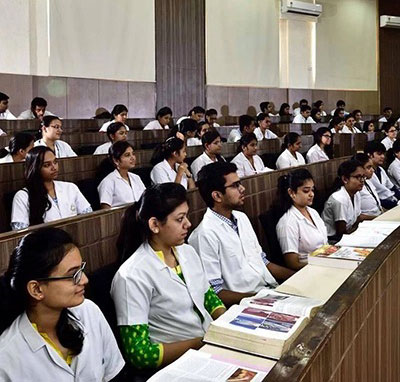
KSD has State-of-the-art Air Conditioned Lecture Halls to fulfill the requirements of didactic teaching. The lecture halls are well illuminated, sound proof, wall to wall carpeted and self-contained in all respects.Additional two self contained class rooms are also available for students.
Each lecture hall has an LCD projector, Over Head Projector (OHP), Computer System, state-of-the-art acaustics
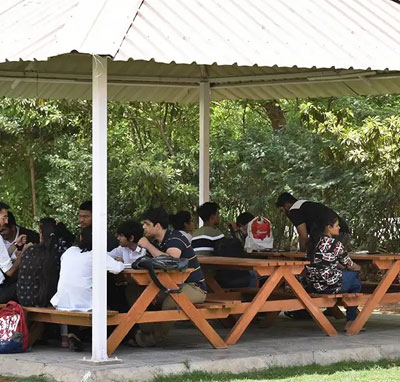
Educational psychologists of U.S. concluded that a good canteen in a college could increase the academic performance. Institutions today are understanding the importance of and striving hard to provide good canteen facilities. Students unanimously agree that canteen is the place to unwind, relax and hang out. It is a place where you can be yourself and forget the classroom etiquette. Even if you are broke or a bookworm, the charm of the canteen will still capture you! “
Food, definitely, is the priority when one goes to the canteen. Meeting friends, completing notes, exchanging news (read as gossip) and not to forget dating, are on the list too.
Students Library
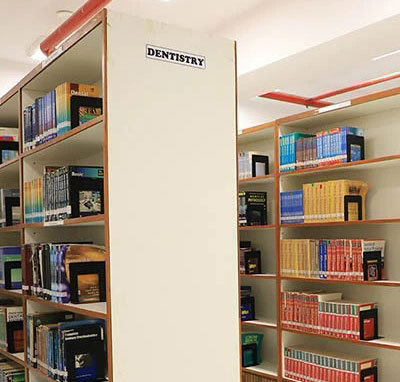
Students Library – Library is the heart of any educational institution. The rich and high-tech library at KSD keeps its doors of knowledge open for the students 24×7. The library has a collection of over 4000 books and subscribes to around 50 scientific journals. The computer lab with 50 computers is attached to this library. A separate reading room which is open 24 x 7 can seat approximately 300 students.
Students Hostel

KSD has separate hostel for boys and girls. Each hostel has about 40 rooms categorized as Air-conditioned Rooms, Special Rooms and Dormitories. Air-Conditioned and Special Rooms are on ground floor and first floor while Dormitories are on the second floor.
Air-conditioned and Special Rooms are on twin-sharing basis while Dormitories are on a triple sharing basis. All the rooms have attached baths and toilets.
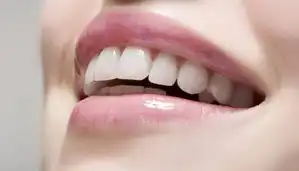
Cosmetic / Aesthetic Dentistry
Esthetic dentistry is the dentistry in its purest form. The quest for the perfect smile is till date a besotted treatment modality …
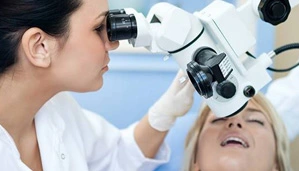
Microscopic Root Canal Treatments
Ever since its sporadic use in mid 1990s; the introduction of microscope has revolutionalized the way root canals are performed in …

Gum Surgeries Under Microscope And Lasers
The backbone of any improvement of governance, its development as well as its protection from any form of wastage or excessiveness …

Full Mouth Prosthetic Rehabilitation
Planning and executing the restorative rehabilitation of a decimated occlusion is probably one of the most intellectually and …
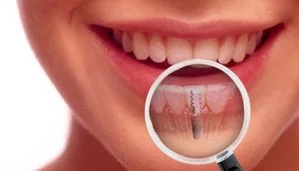
You are never fully dressed without a smile. An adage very well known; however, a missing tooth or teeth will hinder that beautiful …


Oral And Maxillofacial Rehabilitation
Any injury or surgical procedure that might leave the patient without one or more orofacial feature can be be rehabilitated to the …
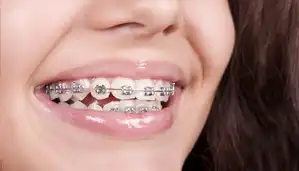
Orthodontic Treatment (Braces)
Orthodontic treatment is a treatment modality to move poorly aligned teeth to a desirable position so as to improve the appearance …
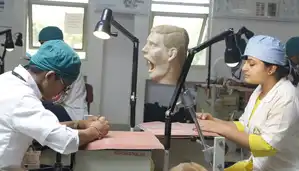
Pediatric dentistry
Every child’s smile is a package of sunshine and rainbows. And this smile is the most precious possession of every parent …
GLOBAL ALLIANCES & PARTNERS

INDUSTRY TIE-UP
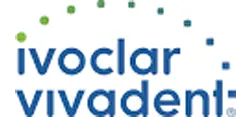
News & Events

Open House Session
According to the dictionary, the word ‘homebound’ means heading towards one’s home. It’s safe to say that over the span of 5 years college becomes home and the people are […]

BDS Orientation Programme 2022
Orientations mark the start of a new beginning. The word ‘orient’ literally means to find one’s footing or find your bearings. On the 5th of May, KSD conducted the first-year […]

National Health Fest for Divyangjan
National Health Fest for Divyangjan Special Olympics concluded with the largest health screening and hygiene lessons for 7500 children with Intellectual Disabilities (ID). This very special drive is being undertaken […]
Academic Collaboration with Boston University & UFPEL
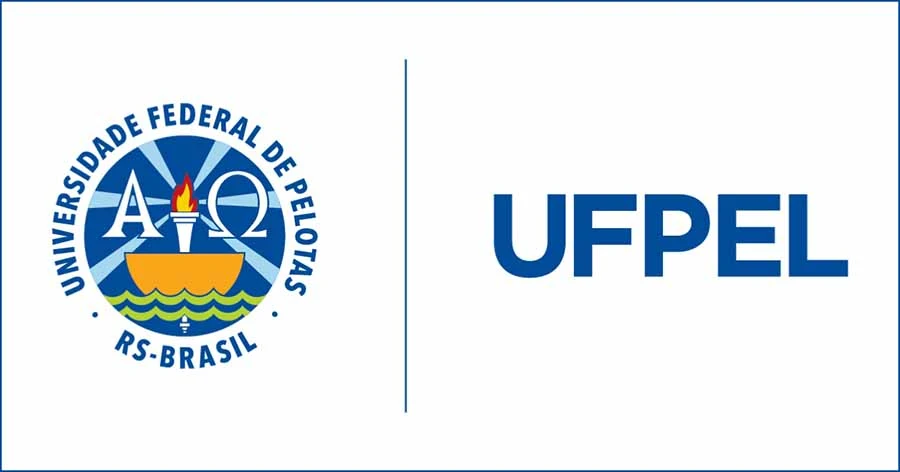

Division of HHS: Dental Health Programs: Hygiene Capstone Project
- General Resources Lists
- Trending News
- FHTC Career Placement
- DNA/ HYG- APA Citation
- DNA PDV Cultural Diversity
- HYG 232 Special Needs
- Virtual Desktop- Software Access
- Helpful Paper Writing Tools
- Creating Presentations
Hygiene Capstone Project
This capstone project is designed to provide the student with an opportunity to apply their knowledge of concepts and skills through an individually designed project. Students will execute the project through the development and implementation of a patient treatment plan that culminates in a final paper and presentation on the specific "Periodontal Type II" or greater case identified.
Keys to Finding Research
Some Basics of Searching for Research:
1.) In any search bar start with the whole of your research topic. For example: If the topic of the paper is "Periodontal Attachment Loss in Diabetic Patients" and you only search "Attachment Loss," you will get articles and information that do not apply to the topic. Start with the whole topic and see what comes up.
2.) Refining the results:
2a.) TOO MUCH - If you are getting too many articles, try putting quotes around key search terms "Attachment Loss" "Diabetic Patients." This will limit the search to articles where those terms appear beside each other in context.
2b.) NOT ENOUGH- Break down the topic into variations . "Diabetes and Dental Care," "Attachment Loss in Dental Care," "Periodontal Care and Diabetes"
3.) Don't stop at the required number of sources! Although the requirement says you need three additional resources, always find a few more than required. Just because you have them, doesn't mean you have to use them. It is better to have choices when writing a paper than trying to force a paper from limited options.
4.) READ THE WHOLE ARTICLE (Or at the very least 1st Paragraph, a Middle Paragraph, and the Last paragraph)!!! Your search engine may pull up an article that has your search terms in the article, but that does not always mean the article actually speaks to your topic. Be sure that the entirety of the source supports your topic, not just a single sentence.
Link to APA Libguide
- How To: APA Formatting Guide Link To connect to the full libgide on APA formatting click here. Offers additional videos, instruction, links, and source citation breakdowns.
Your Assignment
- Case Study and Assignment Details
- Project Rubric 2022-2-16
Guide Video
Plagiarism: What it is and how to avoid it
- Plagiarism Rutgers University This link opens in a new window Entertaining video describing plagiarism and how to avoid it.
- Dr. Cite Rite Central Piedmont Community College Libraries This link opens in a new window Help for citing correctly.
- You Quote It, You Note It Acadia University This link opens in a new window Techniques for proper citation.
- Plagiarism Court Fairfield University This link opens in a new window Choose Flash or HTML for viewing this video.
- What is plagiarism and how to avoid it 2 Minute video explaining plagairism
- Schmooc on Plagiarism This 4 minute video is funny but explains the ins and outs of plagiarism very well.
- Tips to avoid Accidental Plagiarism Best methods to make sure you do not accidentally plagiarize.
Recommended Research Sites
- FHTC Online Library Quick Link Available 24/7
Even if you are researching from home there are resources that can be accessed from the Online Library Catalog. There are several eBooks and eVideos on the topic options for your research paper. Click the link below, use the login information listed, search for your topic area. Pay attention to "format" information if you want only online material.
- Kansas State Library Quick Link Click on "Online Resources" Scroll down to the "Health" collection to find recommended databases. To Expand click "View All" at the bottom of the list
-For general knowledge of conditions or disorders the "Gale Health Reference Collection" is recommended for starting your research.
-For research studies, journal articles, and similar academic based materials on your topics go to "Health Source Academic & Nursing;" " ProQuest Nursing and Allied Health;" or "Medline"
-For some topics these databases will be of value: "Alternative HealthWatch;" "Consumer Health Complete;" "Psychology and Behavioral Sciences Collection"
-Remember to only use FULL-TEXT articles. Never use "Abstracts" as primary research.
The following databases also provide various articles that may be helpful in your research process. Remember to consider only FULL-TEXT articles available, the date the article was published , and whether it is research- opinion- or promotion based information before using. Not all articles will be available for free through these databases. In many cases, just like with Google Searches, you will be able to access the abstract but not a full-text article. However, if you get the name of an article you are interested in- you might search it in the databases listed above- it might be available.

- Cochrane Library The key to this site is accessing the "free" articles provided. For those articles that are free- some are full-text, but not all. Be sure to check carefully that the articles meet criteria for academic research use.
- Dentistry Today This publication offers searchable article archives and the majority meet the requirements for use in academic research writing. However, there are a few "ad" based articles to watch for.
- PennWell RDH Magazine Again, this site offers a searchable archive of articles from the publication. Most will be usable, but there are "ad" based and "opinion" based articles included.
Q: What does "Scholarly Article" or "Peer-Reviewed Article" Mean?
Coulter, P. (2016). Richard G. Trefry library: American public University System. Libanswers. http://apus.libanswers.com/faq/44354
"Scholarly" and "peer reviewed" are often used synonymously, but they are not necessarily the same thing. Peer reviewed articles are always scholarly, but not all scholarly sources are peer reviewed. It may seem confusing, but it makes more sense if you think of "scholarly" as an umbrella term for several different kinds of authoritative, credible sources . These include :
- Peer reviewed journals . These journals primarily exist to publish the research findings of experts in a field. The articles that you see in these journals have been closely scrutinized by a panel of reviewers (also experts in the same field) before they are published.
- Trade or professional journals or magazines . The articles in these periodicals are also written by and for experts, but there is no peer review. The articles aren't limited to research...they may be news, best practice tips or opinion pieces.
- Government Publications Many government agencies publish books, reports, data or statistics. Government researchers, like those who publish in peer reviewed or trade journals, are often experts in their field.
- Books. Many researchers publish books or book chapters.
How can you tell if an article is scholarly? You will have to do some detective-work, but there are some telltale signs:
- Author(s) : Ideally, you should rely on information that has been published by an expert, someone who has studied the topic long and hard. Most scholarly publications will list an author's credentials (their degrees -- M.S., Ph.D., Ed.D., etc. - and the institution that they work for) along with his or her name.
- Content: Look for articles that cover a topic in detail (more than just a few pages long, typically). It will probably include some kind of literature review, and discuss the work of other authors, in addition to any original research findings. Make sure it cites its sources (a scholarly article will always have a "references," "bibliography" or "works cited" list).
- Audience: Scholarly articles are written for professionals in the field. You will probably notice a lot of technical language and/or discipline-specific jargon. The tone will be formal.
- Publisher. Visit the journal's website to see what organization publishes it. Professional associations, universities and government agencies are particularly good signs. As you become more experienced, you'll also start to recognize major publishing companies in your field of study (Wiley, Elsevier, Sage, etc.).
- Purpose and scope. When you're on the journal's website, look for an "about" link to learn who the intended audience is and what kind of articles are accepted.
- << Previous: Creating Presentations
- Last Updated: Mar 28, 2024 12:52 PM
- URL: https://libguides.fhtc.edu/Dental
OPD Timing: 8.30am to 2.30pm (Sunday/National Holiday Off)
Admission MDS 2023 | Gallery | Contact Us
Papers and Posters Oral Pathology and Microbiology
- Awards and Achievements
- Dr Manju Chaudhary, 3rd year pg was awarded best paper in OOO, 2012 conference held at Lucknow.
- Dr Garima Bhatt, first year pg was awarded best poster in forensic odontology conference (IAFO, 2012) held at Ghaziabad.
- Department Home
- Department Gallery
- Courses Offered
- Treatment Procedures
- Treatment Gallery
- Scientific and Other Academic Activities
Darshan Dental College and Hospital started in 1999 in the heart of Udaipur city of Rajasthan also famously known as the 'City of Lakes'. The college imparts education and training for 5 years leading to the degree of Bachelor of Dental Surgery (B.D.S) and Master in Dental Surgery (M.D.S) in all the specialties of dentistry.
Quick Links
- Departments
- Admission Inquiry
- News Updates
You've successfully sent the message!
Contact Info
- Ranakpur Road, Village-Loyara, Udaipur 313011 (Raj.)
- +91-8875677899, +91-9982682085
- [email protected]
- www.darshandentalcollege.org
- www.facebook.com/darshandental
- www.google.co.in/maps/darshandental
Copyright 2024 © All Rights Reserved
Designed by Aivon Solutions
Got any suggestions?
We want to hear from you! Send us a message and help improve Slidesgo
Top searches
Trending searches

infertility
30 templates
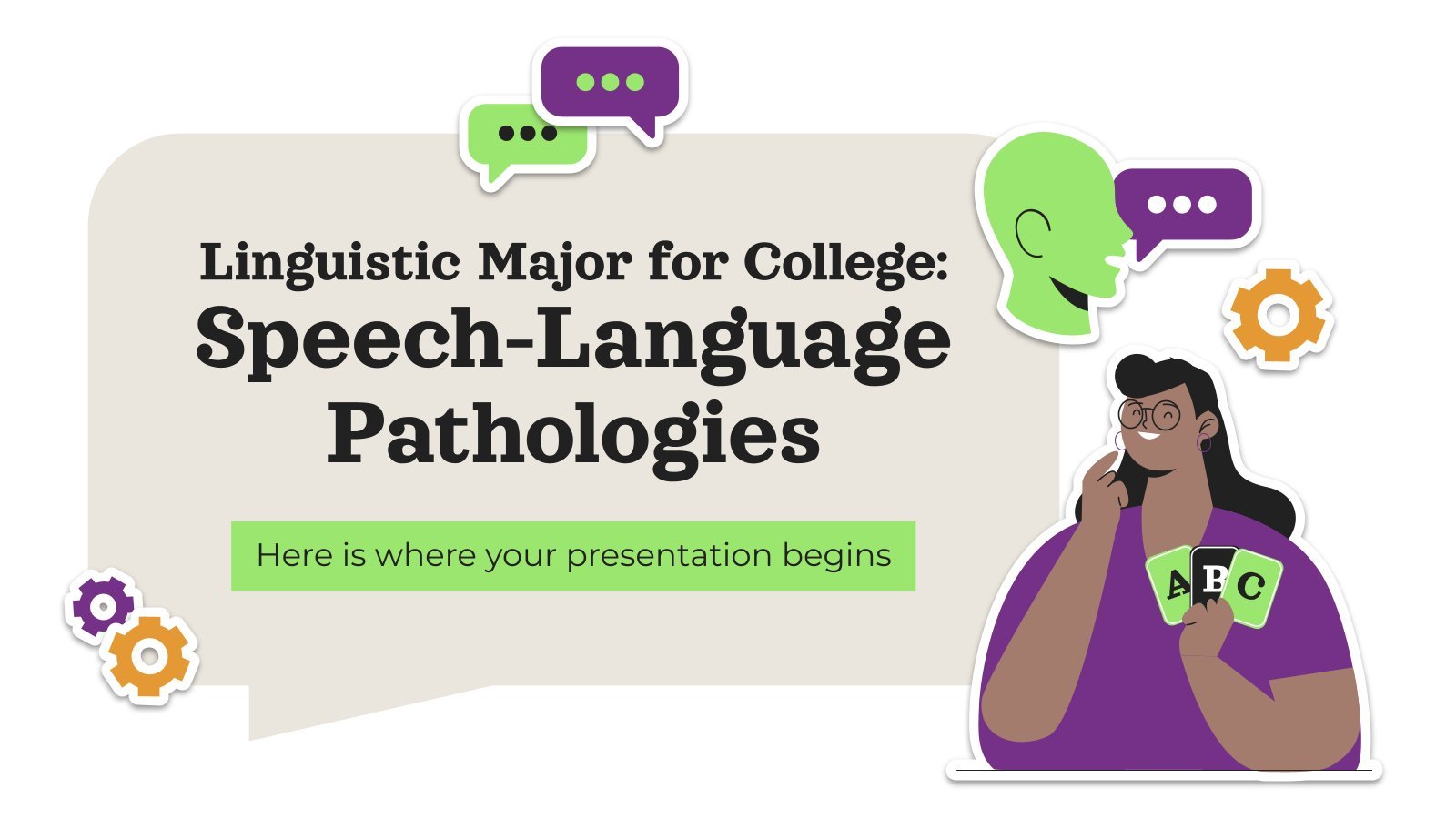
linguistics
89 templates

15 templates

28 templates

public health
35 templates

holy spirit
38 templates
Dentistry Presentation templates
Some people are afraid to go to the dentist... it's okay, it's normal to relax you and show you that dentists are highly trained professionals who only want your teeth to look perfect, we have prepared a collection of google slides and powerpoint templates on dentistry. let's go for the dream smile.

Dental Infographics
It seems that we always fear visiting the dentist, but the truth is that taking care of our oral health is a work that we all appreciate. Having good hygiene guidelines is essential to avoid diseases. And to convey these tips we have created this dental themed template, with illustrations...

Oral Cavity Diseases: Gingivitis
Download the Oral Cavity Diseases: Gingivitis presentation for PowerPoint or Google Slides. Taking care of yourself and of those around you is key! By learning about various illnesses and how they are spread, people can get a better understanding of them and make informed decisions about eating, exercise, and seeking...

Premium template
Unlock this template and gain unlimited access
Do you need a new challenge in your career? Before you start looking for a job, make sure you have a resume that lives up to your expectations, as it will be your presentation letter. Today we bring you a proposal specially created for dentists, although you can adapt it...

Formal Odontology
Going to the dentist regularly is a good choice for not only your buccal health, but also your overall health. If you’ve dedicated your life to odontology and want to present your clinic to new clients or investors, this template is the perfect option. You already know the importance of...

Pediatric Dentistry Center
Download the Pediatric Dentistry Center presentation for PowerPoint or Google Slides. Hospitals, private clinics, specific wards, you know where to go when in need of medical attention. Perhaps there’s a clinic specialized in treating certain issues, or a hospital in your area that is well-known for its state-of-the-art technology. How...

Dental Prosthesis Clinic
Where do people go to have their missing teeth replaced or their damaged ones repaired with artificial appliances? To your dental clinic! Dentures, bridges, and implants... your services are in demand, so it's time to attract more potential patients. Customize this blue template (as always, blue is the color of...

Pediatric Dentistry Clinical Case
As you've probably guessed, pediatric dentistry combines the two branches into one: these professionals carry out dentistry services to children. Maybe your kid is growing crooked teeth? You can pay a visit to the doctor and find out why. If, on the other hand, you're one of these professionals, you...

Oral Cavity Diseases: Periodontitis
Download the Oral Cavity Diseases: Periodontitis presentation for PowerPoint or Google Slides. Taking care of yourself and of those around you is key! By learning about various illnesses and how they are spread, people can get a better understanding of them and make informed decisions about eating, exercise, and seeking...

Health Sciences & Technologies Major for College: Dental Hygiene
Teeth make up our beautiful smiles, we must take care of them and keep them clean! Well, and for many other reasons not only aesthetic, but they are also very important for digestion, for example. To keep them clean, in addition to washing them several times a day, it is...

Health Sciences & Technologies Major for College: Dentistry
Dentistry is a fantastic choice for a college major, and this template can help you make the point convincingly. Its design features black text over a light blue background, but what gives it a unique visual identity are its many illustrations of dentists and their tools. Combined with photos and...

Dental Anatomy
Download the Dental Anatomy presentation for PowerPoint or Google Slides. Healthcare goes beyond curing patients and combating illnesses. Raising awareness about diseases, informing people about prevention methods, discussing some good practices, or even talking about a balanced diet—there are many topics related to medicine that you could be sharing with...

Dental Health Center
Download the Dental Health Center presentation for PowerPoint or Google Slides. Hospitals, private clinics, specific wards, you know where to go when in need of medical attention. Perhaps there’s a clinic specialized in treating certain issues, or a hospital in your area that is well-known for its state-of-the-art technology. How...

Dental Trauma Clinical Case
9 out of 10 dentists recommend this template. What happens with the last dentist who doesn’t recommend it? Well, most probably they haven’t discovered its abstract design combining blue and white, its slides full of resources for medical experts, its graphs, infographics and tables… having an organized and clear presentation...

Dental Care and Oral Hygiene - Pre-K
Download the Dental Care and Oral Hygiene - Pre-K presentation for PowerPoint or Google Slides and create big learning experiences for the littlest students! Dynamic and adorable, this template provides the visual stimuli that Pre-K students thrive on and makes your lessons more playful and exciting — after all, Pre-K...

Dental Clinic
Did you know that more than 70 types of bacteria can be found in your mouth? Dental care is very important for our health, so if you’re looking to promote your medical services at your dental clinic, this free template can make wonders!

Health Administration & Assisting Major for College: Dental Assisting
Do you like odontology, but you'd rather not be the one pulling out teeth? You can be a dental assistant and perform many tasks that help dentists do their job! Let's see if we can pique your interest with this template. It has round and soft shapes in pastel tones,...

Tooth Fairy Wish List for Kids
Oh, a tooth fell out! You know what that means right? The Tooth Fairy is coming tonight to give you a gift for being so brave! Surprise the kids in your life with an extraordinary Tooth Fairy wishlist presentation! With this printable template, they can create a magical Tooth Fairy...

Importance of Oral Health Conference
The mouth is the gateway to our digestive system and an integral part of our ability to speak, eat, and smile with confidence. Maintaining good oral hygiene is essential to prevent common dental problems such as cavities, gingivitis, and gum disease. So it's clear as day: brush your teeth and...
- Page 1 of 4
New! Make quick presentations with AI
Slidesgo AI presentation maker puts the power of design and creativity in your hands, so you can effortlessly craft stunning slideshows in minutes.

Register for free and start editing online
- Share full article
Advertisement
Supported by
How to Advocate for Yourself at the Dentist
To get the best care, experts recommend speaking up. Here are tips for what to ask and how to evaluate the treatments you are offered.

By Knvul Sheikh
Think about the last time you went to a dentist : Did you walk out feeling like your questions were answered, or did you wonder whether your provider was being straight with you?
Dental visits can be daunting — and not just because of the whirring drills. Dentists may seem to speak another language entirely, and everything they suggest can feel important. You must have a sealant painted on your tooth or risk bacteria creating holes in it. You must get an extraction because an oral infection has spread and is causing pain.
To get the best results and a more positive experience, experts recommend speaking up. Here are tips for what to ask and how to evaluate the treatments you are offered at the dentist.
Get a good look at the problems yourself.
The first step to effectively advocating for yourself is understanding what your problems are. Ask your dentist to show you exactly where the pockets of your gums are getting deeper and letting bacteria accumulate, or which fillings are getting worn down by night grinding .
“You don’t have to get technical about it,” said Ellie Phillips, a preventive dentist based in Austin. “But I would recommend noting if it’s something affecting your front teeth or the back of your mouth. Is it on the outside, which is the cheek side, or is it on the tongue side?” Visual aids like X-rays or images from an intraoral camera — or even just looking in a mirror — can also help demystify what’s going on in your mouth.
Don’t feel pressured to agree to anything — even cleanings.
Your dentist should be able to explain why particular problem areas need specific treatments, said Alyson Leffel, director of patient advocacy and social work at the NYU College of Dentistry. And it’s perfectly reasonable to ask them for time to research and reflect on your options.
Not every child or adult needs cleanings twice a year, for instance. Studies have found they don’t necessarily lead to better dental outcomes. Similarly, experts debate the benefits of extracting wisdom teeth . And old silver fillings don’t always have to be replaced with composite ones. If you feel uncomfortable pushing back in the moment, one way to give yourself more time is to schedule the recommended appointment for a future date, Dr. Phillips said. Then you can call to reschedule or cancel later.
Ask what’s urgent, and what the alternatives are.
Some issues, like an abscess, may need to be treated right away. But others, such as teeth that need to be replaced with implants, should ideally be dealt with over multiple appointments, Dr. Phillips said. It’s the dentist’s job to lay out a treatment plan that prioritizes the most urgent issues and avoids piling major treatments into a single visit . As the patient, you can — and should — request detailed explanations of the benefits and risks of each treatment, what the recovery time is like, whether you will need to take medication to manage pain and whether there are consequences of delaying care.
“The more questions you ask, the more educated you will be about your dental treatment, and the less likely you are to be anxious about it,” Ms. Leffel said.
Experts also recommended asking about alternative treatments, such as antibiotics for managing gum disease instead of scaling and root planing or surgery. There may also be alternative materials available for the same kind of fix, like porcelain, resin or gold crowns.
Get a second opinion.
If you have oral surgery or another big procedure coming up, or feel uncomfortable with your dentist’s recommendations for any reason, consider getting another expert’s perspective.
If you need your bite corrected, talk to an orthodontist. If you have pain or bleeding in your gums, seek out a periodontist. And if a dentist has recommended a root canal or a full mouth extraction, consult an endodontist or oral surgeon, said Craigg Voightmann, a dental malpractice lawyer in Scottsdale, Arizona.
“If there’s a specialty that does the procedure, you shouldn’t have a general dentist doing it for the most part,” Mr. Voightmann said.
Beware of other red flags.
When you first see a new dentist, be wary if they recommend far more treatment than your previous provider ever suggested. Not all procedures are strictly necessary. For example, some early-stage cavities can simply be monitored every couple months and don’t need to be filled right away.
Avoid practices that offer steep discounts just to get you in the door or say they can do complicated procedures like implants in one day, Mr. Voightmann suggested.
And rely on personal recommendations from friends, family or dental professionals themselves. Ask your hygienist or dentist where they would go if they needed the treatment you’re getting, Mr. Voightmann said.
The best scenario is when your dentist’s treatment philosophy aligns with your own.
“They could be the best dentist or specialist in the world, but if you don’t feel comfortable with them, that’s not going to be a successful relationship,” Ms. Leffel said. “So you need to, as a patient, decide what makes you feel the best.”
Knvul Sheikh is a Times reporter covering chronic and infectious diseases and other aspects of personal health. More about Knvul Sheikh
- MyU : For Students, Faculty, and Staff
Fall 2024 CSCI Special Topics Courses
Cloud computing.
Meeting Time: 09:45 AM‑11:00 AM TTh Instructor: Ali Anwar Course Description: Cloud computing serves many large-scale applications ranging from search engines like Google to social networking websites like Facebook to online stores like Amazon. More recently, cloud computing has emerged as an essential technology to enable emerging fields such as Artificial Intelligence (AI), the Internet of Things (IoT), and Machine Learning. The exponential growth of data availability and demands for security and speed has made the cloud computing paradigm necessary for reliable, financially economical, and scalable computation. The dynamicity and flexibility of Cloud computing have opened up many new forms of deploying applications on infrastructure that cloud service providers offer, such as renting of computation resources and serverless computing. This course will cover the fundamentals of cloud services management and cloud software development, including but not limited to design patterns, application programming interfaces, and underlying middleware technologies. More specifically, we will cover the topics of cloud computing service models, data centers resource management, task scheduling, resource virtualization, SLAs, cloud security, software defined networks and storage, cloud storage, and programming models. We will also discuss data center design and management strategies, which enable the economic and technological benefits of cloud computing. Lastly, we will study cloud storage concepts like data distribution, durability, consistency, and redundancy. Registration Prerequisites: CS upper div, CompE upper div., EE upper div., EE grad, ITI upper div., Univ. honors student, or dept. permission; no cr for grads in CSci. Complete the following Google form to request a permission number from the instructor ( https://forms.gle/6BvbUwEkBK41tPJ17 ).
CSCI 5980/8980
Machine learning for healthcare: concepts and applications.
Meeting Time: 11:15 AM‑12:30 PM TTh Instructor: Yogatheesan Varatharajah Course Description: Machine Learning is transforming healthcare. This course will introduce students to a range of healthcare problems that can be tackled using machine learning, different health data modalities, relevant machine learning paradigms, and the unique challenges presented by healthcare applications. Applications we will cover include risk stratification, disease progression modeling, precision medicine, diagnosis, prognosis, subtype discovery, and improving clinical workflows. We will also cover research topics such as explainability, causality, trust, robustness, and fairness.
Registration Prerequisites: CSCI 5521 or equivalent. Complete the following Google form to request a permission number from the instructor ( https://forms.gle/z8X9pVZfCWMpQQ6o6 ).
Visualization with AI
Meeting Time: 04:00 PM‑05:15 PM TTh Instructor: Qianwen Wang Course Description: This course aims to investigate how visualization techniques and AI technologies work together to enhance understanding, insights, or outcomes.
This is a seminar style course consisting of lectures, paper presentation, and interactive discussion of the selected papers. Students will also work on a group project where they propose a research idea, survey related studies, and present initial results.
This course will cover the application of visualization to better understand AI models and data, and the use of AI to improve visualization processes. Readings for the course cover papers from the top venues of AI, Visualization, and HCI, topics including AI explainability, reliability, and Human-AI collaboration. This course is designed for PhD students, Masters students, and advanced undergraduates who want to dig into research.
Registration Prerequisites: Complete the following Google form to request a permission number from the instructor ( https://forms.gle/YTF5EZFUbQRJhHBYA ). Although the class is primarily intended for PhD students, motivated juniors/seniors and MS students who are interested in this topic are welcome to apply, ensuring they detail their qualifications for the course.
Visualizations for Intelligent AR Systems
Meeting Time: 04:00 PM‑05:15 PM MW Instructor: Zhu-Tian Chen Course Description: This course aims to explore the role of Data Visualization as a pivotal interface for enhancing human-data and human-AI interactions within Augmented Reality (AR) systems, thereby transforming a broad spectrum of activities in both professional and daily contexts. Structured as a seminar, the course consists of two main components: the theoretical and conceptual foundations delivered through lectures, paper readings, and discussions; and the hands-on experience gained through small assignments and group projects. This class is designed to be highly interactive, and AR devices will be provided to facilitate hands-on learning. Participants will have the opportunity to experience AR systems, develop cutting-edge AR interfaces, explore AI integration, and apply human-centric design principles. The course is designed to advance students' technical skills in AR and AI, as well as their understanding of how these technologies can be leveraged to enrich human experiences across various domains. Students will be encouraged to create innovative projects with the potential for submission to research conferences.
Registration Prerequisites: Complete the following Google form to request a permission number from the instructor ( https://forms.gle/Y81FGaJivoqMQYtq5 ). Students are expected to have a solid foundation in either data visualization, computer graphics, computer vision, or HCI. Having expertise in all would be perfect! However, a robust interest and eagerness to delve into these subjects can be equally valuable, even though it means you need to learn some basic concepts independently.
Sustainable Computing: A Systems View
Meeting Time: 09:45 AM‑11:00 AM Instructor: Abhishek Chandra Course Description: In recent years, there has been a dramatic increase in the pervasiveness, scale, and distribution of computing infrastructure: ranging from cloud, HPC systems, and data centers to edge computing and pervasive computing in the form of micro-data centers, mobile phones, sensors, and IoT devices embedded in the environment around us. The growing amount of computing, storage, and networking demand leads to increased energy usage, carbon emissions, and natural resource consumption. To reduce their environmental impact, there is a growing need to make computing systems sustainable. In this course, we will examine sustainable computing from a systems perspective. We will examine a number of questions: • How can we design and build sustainable computing systems? • How can we manage resources efficiently? • What system software and algorithms can reduce computational needs? Topics of interest would include: • Sustainable system design and architectures • Sustainability-aware systems software and management • Sustainability in large-scale distributed computing (clouds, data centers, HPC) • Sustainability in dispersed computing (edge, mobile computing, sensors/IoT)
Registration Prerequisites: This course is targeted towards students with a strong interest in computer systems (Operating Systems, Distributed Systems, Networking, Databases, etc.). Background in Operating Systems (Equivalent of CSCI 5103) and basic understanding of Computer Networking (Equivalent of CSCI 4211) is required.
- Future undergraduate students
- Future transfer students
- Future graduate students
- Future international students
- Diversity and Inclusion Opportunities
- Learn abroad
- Living Learning Communities
- Mentor programs
- Programs for women
- Student groups
- Visit, Apply & Next Steps
- Information for current students
- Departments and majors overview
- Departments
- Undergraduate majors
- Graduate programs
- Integrated Degree Programs
- Additional degree-granting programs
- Online learning
- Academic Advising overview
- Academic Advising FAQ
- Academic Advising Blog
- Appointments and drop-ins
- Academic support
- Commencement
- Four-year plans
- Honors advising
- Policies, procedures, and forms
- Career Services overview
- Resumes and cover letters
- Jobs and internships
- Interviews and job offers
- CSE Career Fair
- Major and career exploration
- Graduate school
- Collegiate Life overview
- Scholarships
- Diversity & Inclusivity Alliance
- Anderson Student Innovation Labs
- Information for alumni
- Get engaged with CSE
- Upcoming events
- CSE Alumni Society Board
- Alumni volunteer interest form
- Golden Medallion Society Reunion
- 50-Year Reunion
- Alumni honors and awards
- Outstanding Achievement
- Alumni Service
- Distinguished Leadership
- Honorary Doctorate Degrees
- Nobel Laureates
- Alumni resources
- Alumni career resources
- Alumni news outlets
- CSE branded clothing
- International alumni resources
- Inventing Tomorrow magazine
- Update your info
- CSE giving overview
- Why give to CSE?
- College priorities
- Give online now
- External relations
- Giving priorities
- Donor stories
- Impact of giving
- Ways to give to CSE
- Matching gifts
- CSE directories
- Invest in your company and the future
- Recruit our students
- Connect with researchers
- K-12 initiatives
- Diversity initiatives
- Research news
- Give to CSE
- CSE priorities
- Corporate relations
- Information for faculty and staff
- Administrative offices overview
- Office of the Dean
- Academic affairs
- Finance and Operations
- Communications
- Human resources
- Undergraduate programs and student services
- CSE Committees
- CSE policies overview
- Academic policies
- Faculty hiring and tenure policies
- Finance policies and information
- Graduate education policies
- Human resources policies
- Research policies
- Research overview
- Research centers and facilities
- Research proposal submission process
- Research safety
- Award-winning CSE faculty
- National academies
- University awards
- Honorary professorships
- Collegiate awards
- Other CSE honors and awards
- Staff awards
- Performance Management Process
- Work. With Flexibility in CSE
- K-12 outreach overview
- Summer camps
- Outreach events
- Enrichment programs
- Field trips and tours
- CSE K-12 Virtual Classroom Resources
- Educator development
- Sponsor an event

IMAGES
VIDEO
COMMENTS
Dental research topics are essential for undergraduates for several reasons: Skill Development. Engaging in dental research topics helps undergraduates develop critical thinking, problem-solving, and analytical skills essential for their academic and professional growth. Contribution to Knowledge.
Abstract. The field of dentistry is incredibly vast, with a seemingly endless array of research topics to choose from. In this book, author has compiled a list of 500+ research topics that are the ...
1. Introduction. The present special issue of Dentistry Journal deals with "Advances in Implant Dentistry," and the following keywords denote hot topics in this field: template-guided implant placement, minimally invasive techniques, short lengths and reduced implant diameters, novel bone grafting techniques, medically compromised patients, peri-implantitis treatment, immediate placement ...
4 Chemotherapeutic agent: chemical substance that provides a clinical therapeutic benefit.6 Used to eliminate, reduce, or alter the effect of microorganisms in the oral cavity, preferably the pathogenic microorganisms, or to effect a change in the host response. They may be applied locally, orally or parenterally. 7 Antimicrobial agent: chemotherapeutic agent that works by reducing the number of
Featured oral health topics. Antibiotic prophylaxis. Infection control and sterilization. Treating Acute Dental Pain. Occupational Safety. Pregnancy. Whitening. The ADA Library & Archives also provides dental and oral health research and resources for members. Definitions, explanations and information about various oral health terms and dental ...
1 Dental Clinic Zagreb, Endodontics, Oral Pathology and Periodontology, Zagreb, Croatia. Background: Root resorption is the loss of dental hard tissue (i.e., cementum, dentine and/or enamel) as a result of odontoclastic action. Root resorption in adult teeth is undesirable as it leads to irreversible damage, which may necessitate dental ...
American Academy of Fixed Prosthodontics: 71st Annual Scientific Session Poster Presentations (February 2022) 1-10. 11-20. 21-30. 31-40. 41-49. Accuracy of chair-side milling machines: Marginal fidelity and damage induction in milled CAD/CAM materials. Pakwan Varapongsittikul, John A. Sorensen.
Short oral and scientific poster presentations accepted for the 96th Congress of the European Orthodontic Society, Hamburg 10-14 June 2020, European Journal of Orthodontics, Volume 42, Issue 5, ... Environmental sustainability of post-orthodontic dental retainers: a comparative life-cycle assessment of Hawley and Essix retainers
Guidelines for E - Paper Presentations. 1) It is mandatory for the presenters to get registered for the conference. Group: 1 - Undergraduate Dental Students & Interns. Group: 2 - Post Graduate Dental Students. Group: 3 - Professionals (BDS, MDS/ Researchers) 2) Only two Co-Authors are allowed.
Insights in Oral-Systemic Immunology: 2024. Nadya Lumelsky. Paul C. Edwards. Francesco D'Aiuto. 161 views. An interdisciplinary journal that investigates how dental, oral and craniofacial health and diseases are understood in the context of the whole body. Its goal is to improve oral and overall health ...
PRESENTATIONS SELECTED FOR 33RD IACDE NATIONAL CONFERENCE, VIJAYAWADA, NOV 2018. PAPER PRESENTATIONS S.NO PRESENTERS REG NO COLLEGE NAME TITLE 1 Dr. Paramarshi Das SZC0594 DAYANANDA SAGAR COLLEGE OF DENTAL SCIENCES To Evaluate And Compare The Surface Deformation Of Hyflex Cm And Hyflex Edm Niti Rotary File System After Instrumentation And
Review papers will not be accepted. 5. The duration for paper will be 8 minutes followed by 2 minutes for discussion. Presenting author should strictly adhere to the time schedule. 6. All paper presentations are to be presented in a PowerPoint presentation 2003 or higher versions in formats ppt/pptx. 7.
The current trend is to pass the concept of Endodontics as an uber-specialised branch of dentistry where clinician skill is considered more relevant than overarching biological principles to achieve a successful outcome. This Special Issue will highlight how the biological foundations of Endodontics are still at the forefront of reproducible ...
Objective: To perform a bibliometric analysis on the top-cited articles over the last three decades from 1989 to 2018, using a longitudinal set-up, in order to analyse how articles' features have evolved over time. Setting and sample population: A sample of 312 articles divided into three subgroups of 104 top-cited articles for each decade were included.
The presentations beyond these topics will be considered for Non-competitive category. Type of Poster/Paper Presentations: Factual Representations/ Original Research/ Systematic Analysis / Case Series / Case Reports. TOPICS FOR SHORT FILM/VIDEO: Bursting Myths in Dentistry; Managing Dental Fear and Anxiety; Determinants for Oral Health
Fluoroapatite-Veneered Zirconium Crowns. with 3 Different Coronal Core Foundations. N. Mackie DDS, T. Hamalian DDS, MS and A. Randi DDS. Fabrication of an Auricular Prosthesis in a. Patient with Congenital Microtia: A Case Report. O.K. Ahmad DDS, MDSc, FADI , M. Golden MAMS, CCA , JM Huryn DDS. Root attachments as an option for overdentures.
Results: Pilot study of 40 patients, 18 boys and 22 girls, revealed 18% very overweight, and 5% overweight (total of 23% have BMI equal to/above 91st centile). 11% of very/overweight patients were <5 years, 44% 5-11 years and 44% >11 years. Action plan: Training for clinical staff so protocol can be used department wide.
Methods: Patients aged between 14 and 25 years old having received a diag- nosis of ALL before the age of 11 years and after September 2000 received clinical and radiographic oral examinations. Results: Dental anomalies were observed in 26 (51.0 percent) of 51 subjects. Microdontia was the most prevalent dental defect (39...
Clinical Topics in Dentistry is a series of educational programs designed to enable dental professionals to learn independently. The Clinical Topics have been recorded from live procedures performed at the midwinter meetings of the Chicago Dental . Society and the Hinman Dental Society. All programs were carefully edited for effective learning.
In any search bar start with the whole of your research topic. For example: If the topic of the paper is "Periodontal Attachment Loss in Diabetic Patients" and you only search "Attachment Loss," you will get articles and information that do not apply to the topic. Start with the whole topic and see what comes up. 2.) Refining the results: 2a.)
CHOOSING PUBLIC HEALTH DENTISTRY AS A CAREER: A CROSS-SECTIONAL STUDY. Sachendra Bharat. Explore the latest full-text research PDFs, articles, conference papers, preprints and more on PUBLIC ...
Dr Garima Bhatt, first year pg was awarded best poster in forensic odontology conference (IAFO, 2012) held at Ghaziabad. NAME OF POST GRADUATE STUDENT. PAPER PRESENTATION. POSTER PRESENTATION. 1. Dr. Manju Chaudhary. 1) Comparison of salivary PH in caries free and caries active children- a pilot study 10th NATIONAL TRIPLE 'O' SYMPOSIUM ...
Download the Pediatric Dentistry Center presentation for PowerPoint or Google Slides. Hospitals, private clinics, specific wards, you know where to go when in need of medical attention. Perhaps there's a clinic specialized in treating certain issues, or a hospital in your area that is well-known for its state-of-the-art technology. How ...
To get the best care, experts recommend speaking up. Here are tips for what to ask and how to evaluate the treatments you are offered. By Knvul Sheikh Think about the last time you went to a ...
CSCI 5980 Cloud ComputingMeeting Time: 09:45 AM‑11:00 AM TTh Instructor: Ali AnwarCourse Description: Cloud computing serves many large-scale applications ranging from search engines like Google to social networking websites like Facebook to online stores like Amazon. More recently, cloud computing has emerged as an essential technology to enable emerging fields such as Artificial ...